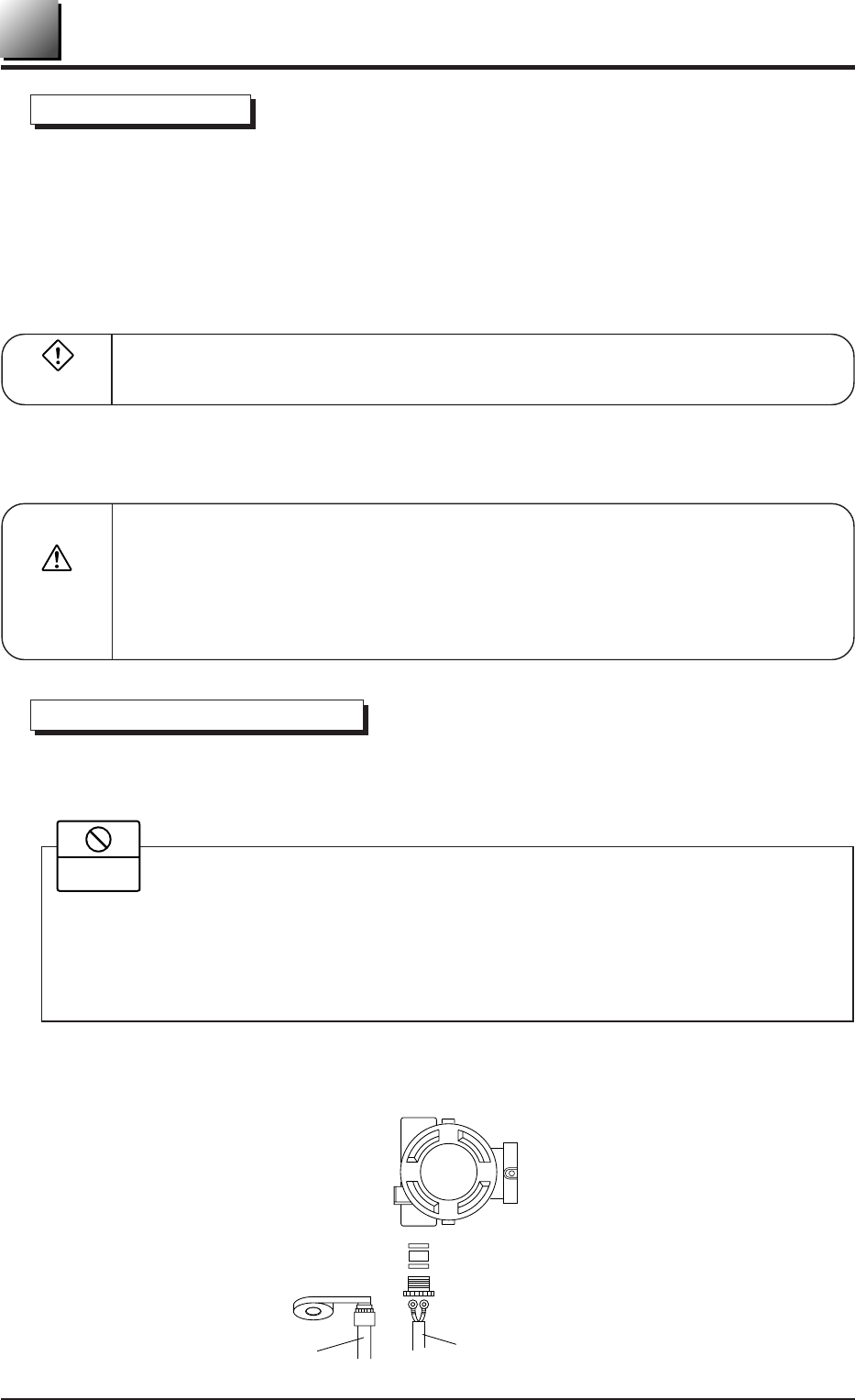
54
WIRING
(1) Application of a voltage exceeding 60 V DC or 40 V AC (exceeding 32 V DC or 23 V AC
when arrester equipped) between “+” and “–” terminals may result in damage to the transmitter.
(2) Use a shielded cable for the transmission line where possible.
(3) Avoid installation of signal cable and power cable in same conduit or cable tray in order to
prevent increased noise. Also, do not bring the signal cable close to large electrical equip-
ment.
7
7.1 Wiring procedure
Use sealing tape, if using metal pipe screw coupling or rubber gasket and fastening gland in the
case of cable (OD ø11) <0.43"> to ensure airtightness of the connection box.
Cable
Metal
pipe
Cautions on wiring
Sealing of conduit connection
In case of an explosionproof arrangement, wiring shall be made in accordance with
the relevant regulations to ensure the explosionproofing.
DANGER
• Before making wiring work, be sure to turn OFF the main power to prevent
electric shocks.
•Use wiring materials of correct rating to prevent fire accidents.
•After installing the transmitter, firmly close the covers of the transmission unit
and terminal box. If not, rain water enter the transmitter which may result in
trouble or incorrect operation.
CAUTION
1. If the connection box is located above the transmitter when using a protec-
tive tube for the wiring, then moisture may enter the protective tube and have
an adverse effect on the transmitter. So maintaining airtightness of the
connection box is an important practice.
2. The thread of conduit tube should meet the selected size and a seal fixture
should be used.
Important


















